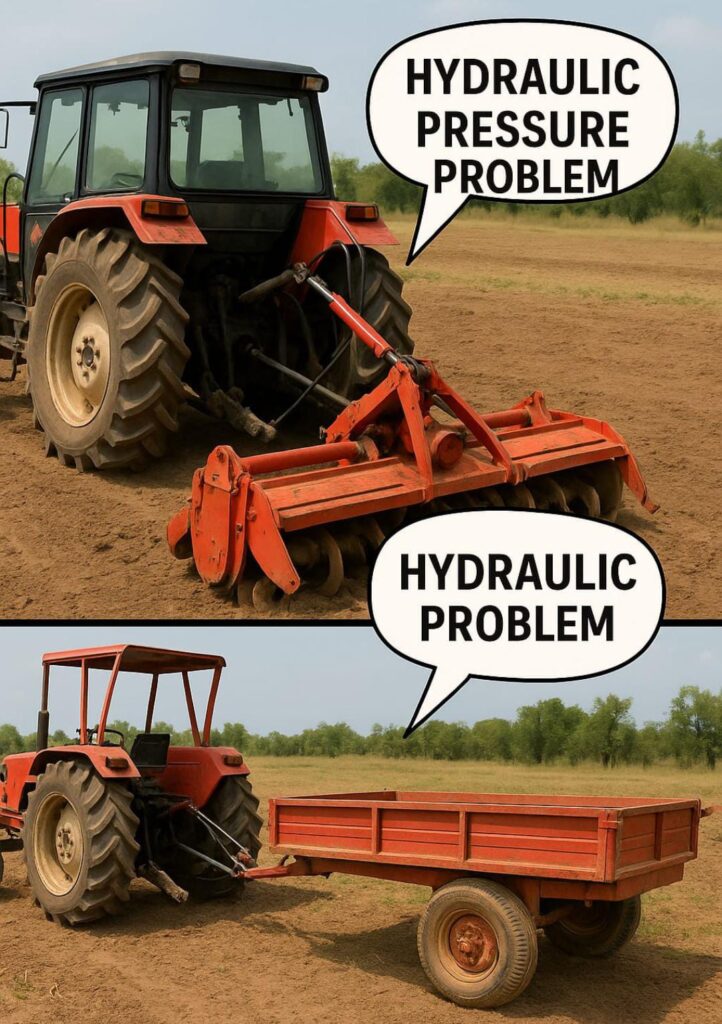
Tractor hydraulic problem and solution
TRACTOR HYDRAULIC PROBLEM
There are many ways to deal with tractor hydraulic problems as the issue can range from oil leaks to faulty pumps, faulty filters, air leaks, overheating, and even sluggish running.
Slow or weak performance
If your tractor implements respond slowly to lift or perform, the system probably is not creating enough pressure.
Low fluid levels: The simplest reason for poor operation is low hydraulic fluid. Refer to the reservoir and top off with the fluid recommended by the manufacturer as necessary.
Clogged filters: A dirty or plugged hydraulic filter slows down fluid flow, causing the system to lag. Change the filter per your tractor’s service schedule.
worn hydraulic motor: The hydraulic pump is the system’s backbone. When it is worn, it will be unable to provide sufficient pressure and flow. It can be diagnosed by looking for low pressure, strange noises, and inefficiency.
Overheating
Heat may damage oil seals and run out the hydraulic fluid, causing premature component failure.
fluid level: Low fluid makes the system have to work harder and produce more heat.
Incorrect gear oil : Use of the wrong viscosity gear oil may compromise the system’s capacity for heat dissipation. Only use the fluid that the manufacturer recommends.
Excessive load: Driving under heavy load for a long time can tax the system too much and make it overheat.
Erratic or jerky movement
Irregular or stuttering hydraulic movement is frequently the result of air contaminated in the fluid.
Air leakage: Air may enter the system through loose fittings or leaks in suction side pump. Check all the hose and fittings for damage or loose clamps.
Fluid contamination
Dirty hydraulic fluid can do severe damage to your system by destroying seals, clogging filters, and wearing out components.
Water contamination: If your hydraulic fluid appears whiteness, it is water-contaminated, which can rust parts and deteriorate the fluid’s properties.
Dirt : Dirt particles can find their way into the system via external leaks, dirty couplers, or maintenance.
Leaks
Fluid leaks cause loss of pressure, decreased efficiency, and possible environmental risk.
Worn hoses and seals: Check all hoses and seals for cracks, damage, or wear and tear.
Loose fittings: Inspect all fittings and connections to make sure they are securely tightened.
Damaged couplers: Quick-connect couplers may leak because of damaged internal O-rings.
Before you start
